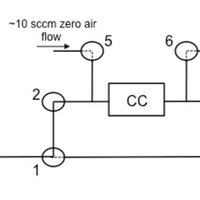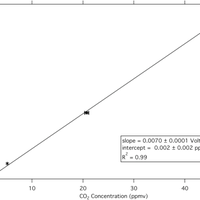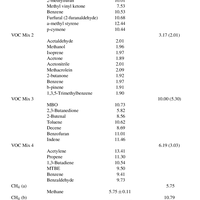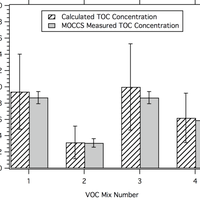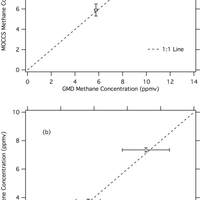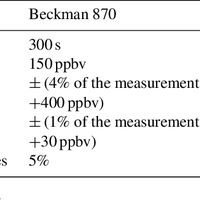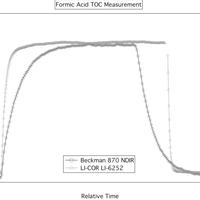Abstract
We report on the development of an accurate, portable, dynamic calibration system for volatile organic compounds (VOCs). The Mobile Organic Carbon Calibration System (MOCCS) combines the production of gas-phase VOC standards using permeation or diffusion sources with quantitative total organic carbon (TOC) conversion on a palladium surface to CO 2 in the presence of oxygen, and the subsequent CO 2 measurement. MOCCS was validated using three different comparisons: (1) TOC of high accuracy methane standards compared well to expected concentrations (3% relative error), (2) a gas-phase benzene standard was generated using a permeation source and measured by TOC and gas chromatography mass spectrometry (GC-MS) with excellent agreement (<4% relative difference), and (3) total carbon measurement of 4 known gas phase mixtures were performed and compared to a calculated carbon content to agreement within the stated uncertainties of the standards. Measurements from laboratory biomass burning experiments of formic acid by negative-ion proton-transfer chemical-ionization mass spectrometry (NI-PT-CIMS) and formaldehyde by proton transfer reaction-mass spectrometry (PTR-MS), both calibrated using MOCCS, were compared to open path Fourier transform infrared spectroscopy (OP-FTIR) to validate the MOCCS calibration and were found to compare well (R 2 of 0•91 and 0•99, respectively). © 2010 Author(s).
Figures
Register to see more suggestions
Mendeley helps you to discover research relevant for your work.
Cite
CITATION STYLE
Veres, P., Gilman, J. B., Roberts, J. M., Kuster, W. C., Warneke, C., Burling, I. R., & De Gouw, J. (2010). Development and validation of a portable gas phase standard generation and calibration system for volatile organic compounds. Atmospheric Measurement Techniques, 3(3), 683–691. https://doi.org/10.5194/amt-3-683-2010

